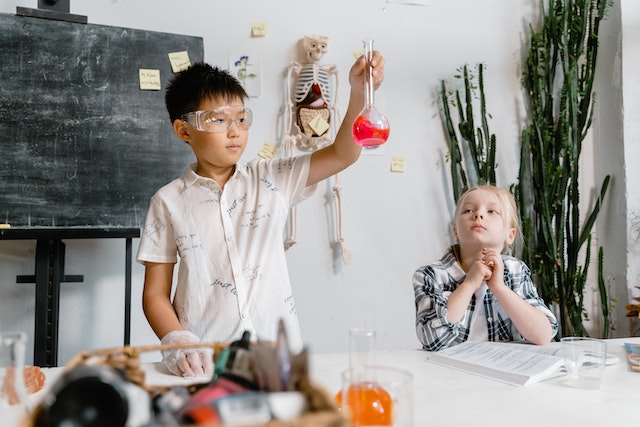
Science is a great subject to teach. But sometimes, science teachers struggle to engage their students. This is because they don’t know how to make the material as engaging as possible. The words of a teacher can make all the difference in the world. One way to do this is to engage your students with some foresight into how you will implement certain activities to keep them engaged and actively learning.
Science can be very engaging, but getting kids engaged in the classroom is challenging. Many teachers have demonstrated creative ways to do this and can teach your students how to find answers and demonstrations creatively. Here are six ways to make science class more engaging and exciting for your kids:
1. Using Lots of Visuals
Visuals make learning more engaging. The lesson becomes more exciting and memorable by using visuals to convey information and concepts. Science is all about building a picture in your mind and using that as a tool for learning, not just reading and memorizing facts. Use visuals to create your diagrams and models of how things work, then let students use them to answer questions. Visuals include the use of graphical abstracts. Help your students make the most of their time in the classroom with engaging graphical abstracts. A graph is a visual representation of data. Charts let you see patterns, trends, and relationships in more detail than words alone.
2. Field Trips
Field trips are a great way to satisfy your students’ desire to explore the world. If you choose an out-of-state location, all transportation will be covered by the school district. Your students can get hands-on experience and learn new skills when they visit different global sites. This could include field trips to museums, aquariums, or other places that help you know about the world around us. Science ambassadors can travel anywhere in the United States and provide an experience designed specifically for your grade level. These trips are offered in many formats, including virtual field trips through educational games and virtual tours via social media channels.
3. Letting Students Have Choices With Research and Assignments
It’s essential to give students options when it comes to research and assignments in science class. This lets them come up with their experiments and choose the methods they like best. The same goes for writing papers and reports. Make research and assignments that are engaging to your students. For example, ask them to find out more about a topic you’ve chosen for your lectures by going on the internet and finding articles about it. They will learn by doing it. It will allow them to practice their learning and show that they understand the material we’re discussing in class.
4. Hands-On and Collaborative Activities
One of the best ways to engage your students is with hands-on and collaborative activities. Labs, explorations, experiments, inquiry, and design challenges are all activities you can use to make your classroom more engaging for your students. For example, labs, which give students a chance to explore experiments and experiment with equipment, are generally more fascinating simply because they simulate real-world situations. In contrast, inquiry-based activities encourage higher-order thinking skills. They typically involve a group of students going through an investigation or problem together, such as designing and building a model to solve a problem or exploring an idea in literature.
5. Let Students Play Games
Students will have fun learning science by playing games. Games are a great way to learn because they engage the brain. Students will also think differently when they play games, thinking critically and creatively by problem-solving and coming up with different solutions to the game’s challenges. You can use all different types of games. Just be sure not to limit them, so they do not apply to your curriculum goals. This is best accomplished after you have created your curriculum plan with all the goals you want to achieve through your lessons.
6. Use Technology In the Classroom
Technology can make science come alive. Using technology in the classroom is an engaging way to deepen your student’s understanding of science topics. Utilizing various devices, such as digital cameras, microscopes, and computers will allow you to help your students explore their world while they learn. As science-related fields of study continue to become increasingly technological, incorporating technology into the classroom is becoming increasingly important. New ways to use technology make learning exciting and engaging, from virtual field trips to online labs and tutorials.
Conclusion
The most important part of teaching is the ability to get your students engaged in the subject. The above ideas are good to implement to make learning more exciting and engaging. The world is changing rapidly, with innovations being released daily, and students must be equipped with skills that will enable them to keep up with the ever-changing world.

